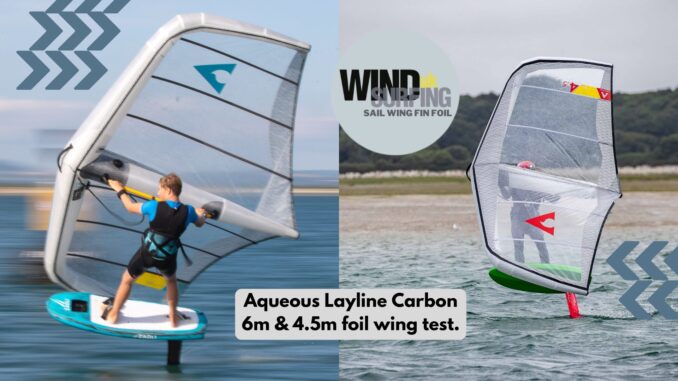
Aqueous wings first came to my attention at the start of 2024 when I spotted a number of luminaries within the wing foiling world using them. Further pricking my interest the Aqueous main USPs are the wing’s use of monofilm in the canopy (which is the most obvious), fully battens across the canopy and the use of Dimension-Polyant P85 (comparable to other exotic materials) which make the Aqueous wings super light All in the Aqueous 6m and 4.5m tested here are super interesting as they’re totally different to other wings on the market.
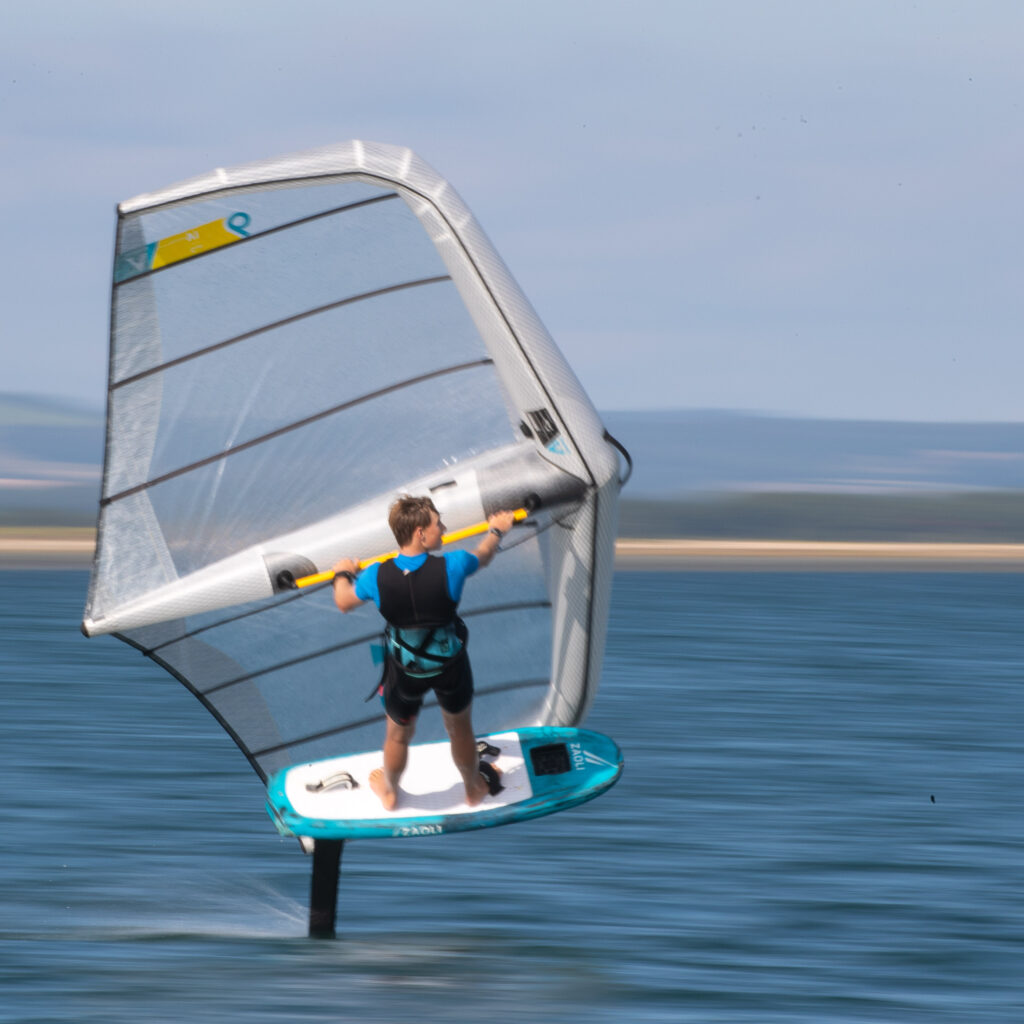
Words: Tez Plavenieks
Pics: Mike Pringuer.
Aqueous wings first look.
Upon landing, I was eager to unpack and see what these wings were all about. I’ll be honest, hearing the rustling of monofilm as I unwrapped the packaging the wings sounded like old crispy windsurfing sails. I was slightly concerned about their durability. More on this in a mo.
Once inflated the manufacturing quality stands out. As does the amount of vision you get when looking through the canopy. Which translates directly onto the water. I don’t think there are any other foil wings currently available which have this level of visibility. One other thing of note: Aqueous wings come with three mini battens riders have to slot into their batten pockets before fully inflating. Two are on the trailing edge, and one is right up front beneath the middle strut. The latter forces shape into the LE whilst the two trailing edge battens give stability and eliminate flutter. It’s worth going through the Aqueous setup guide before heading afloat to make sure you get this sorted correctly.
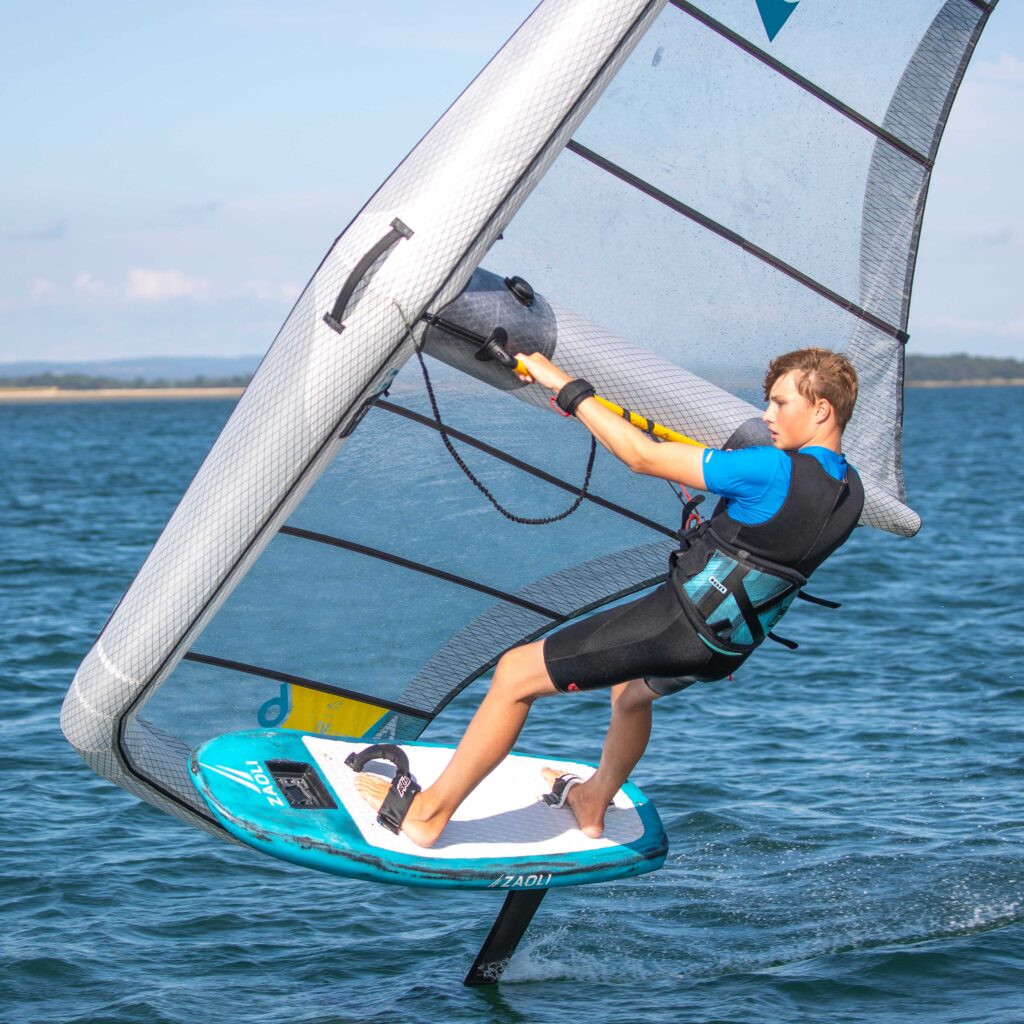
It’s all in the details.
Aqueous wings are exquisitely designed with superb attention to detail. The Dimension-Polyant P85 airframe material is eye-catching and practical. Rigidity is bang on. You can feel this just by pumping the wing on land. Along the middle strut is a very comfortable boom with a soft squishy grip.
The canopy monofilm tightens up considerably with air inside the wing. And you can see that, as Aqueous says on their website, stretch will be virtually zero. Unlike foil wings with a more recognisable Dacron-type material. All in all, Aqueous wings resemble in many ways windsurfing sails. Which for me, screams efficiency. Something which often lacks from wings.
Onto the water – the 6m Aqueous first.
First up was a session using the Aqueous 6m. It was a gusty 10-12 knots and I initially wondered if I needed something slightly bigger. I shouldn’t have worried, however, as a couple of pumps saw me power up and fly off the beach. Therefore no issues with the 6m’s power delivery. However, it should be noted the feel when pumping is slightly different to a Dacron canopy wing which springs back after each pump. In contrast, the Aqueous is more direct, transferring momentum into drive more efficiently.
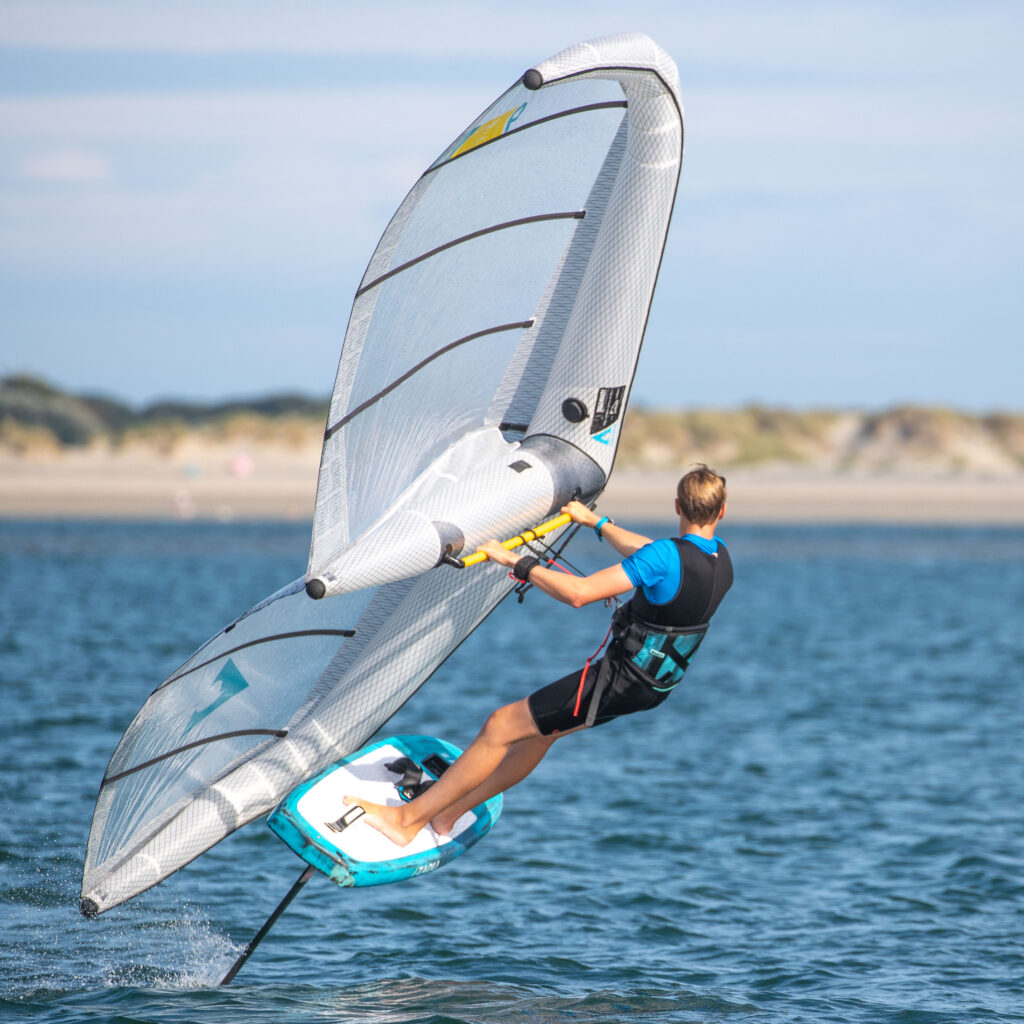
During straight-line foiling riders are able to sheet the Aqueous foil wing in tightly and ‘close the slot’. This helps with speed and, again, efficiency. Every time a gust hits the power transfer is delivered straight to the foil. Therefore it’s worth using a foil that won’t hold you back and accelerates. If not, you may end up getting pulled forwards up top with your board and foil being left behind. This isn’t a criticism of the Aqueous wing. As it’s doing what’s being asked of it perfectly.
Manoeuvres and transitions.
Pinging yourself into moves and transitions is highly rewarding with the Aqueous 6m. It drives into the turn and powers upon exit quickly. This was especially noticeable during tacks. It’s a great wing for upwind turns and could be a tool to help riders nail this move.
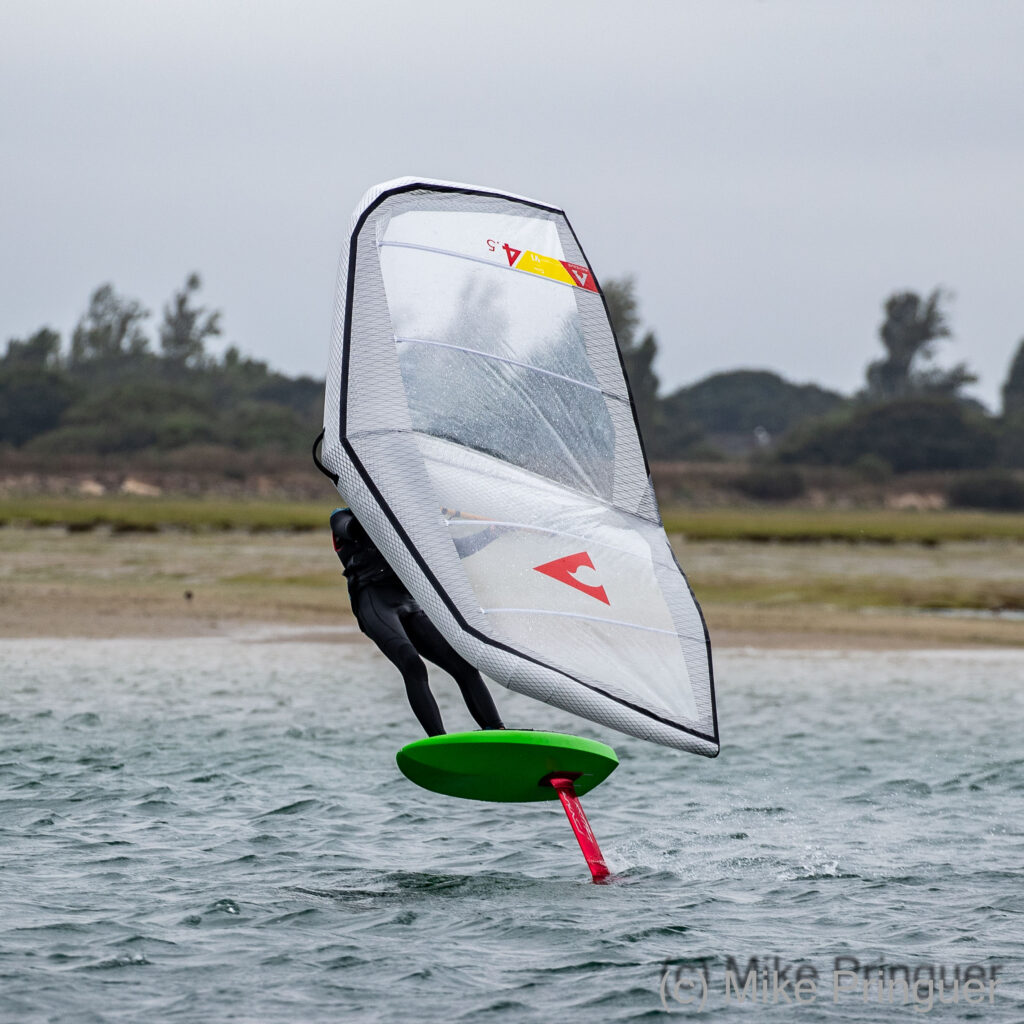
Equally, if you fancy throwing the wing about in a more freestyle kind of way it’ll respond well. You’ll just need to manage the power accordingly and not have it chuck you off. But this is easy to dial in.
The Aqueous 4.5m.
The Aqueous 4.5m does everything the 6m does but being smaller it feels more compact and more throw about. It’s also a fast wing. Experienced riders won’t need much more than 15 knots or so to get going. And once up and flying the 4.5m slips through the air with ease.
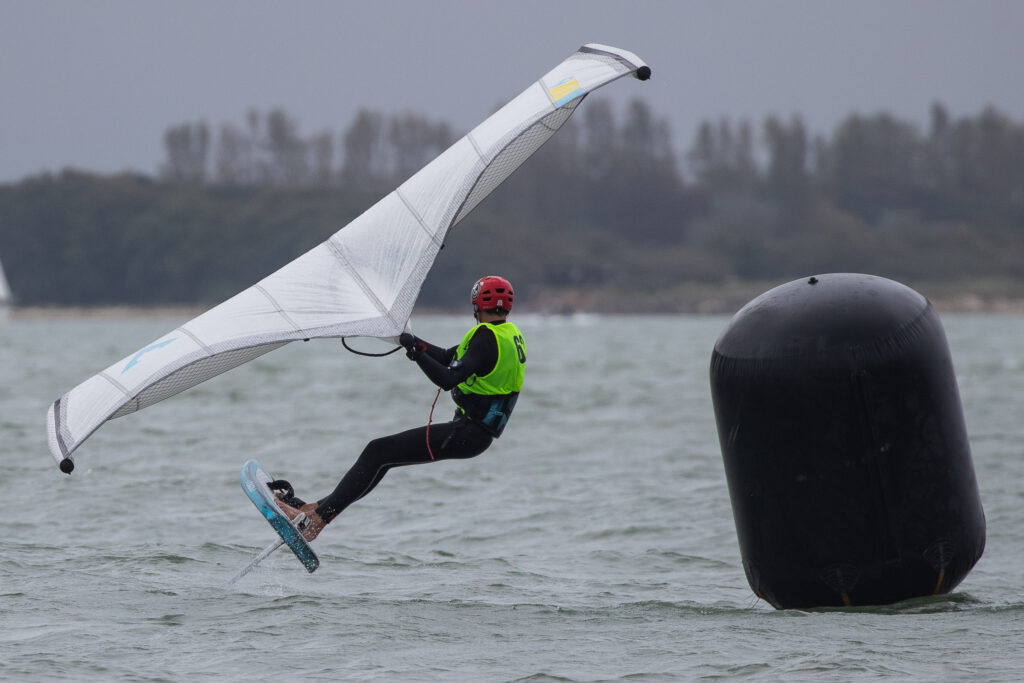
Manoeuvres are even more fun with the 4.5m, the smaller foil wing being a great tool for some whirling and twirling – if this is your bag. Alternatively, fanging down the race course or blasting around your local is rewarding fun. Our young tester had a few great sessions with the 4.5m when it got blowy. Putting his race gear to the test he found the 4.5m was the perfect engine for getting those speed runs down.
Conclusion.
Aqueous have done a sterling job with their Layline Carbon wings. Offering something uniquely different, the Aqueous 6m and 4.5m serve up heaps of performance for all types of rider. I’d suggest they suit more freeride and race riders than out-and-out freestyles or wave heads. But equally, there’s plenty of all-round performance built in.
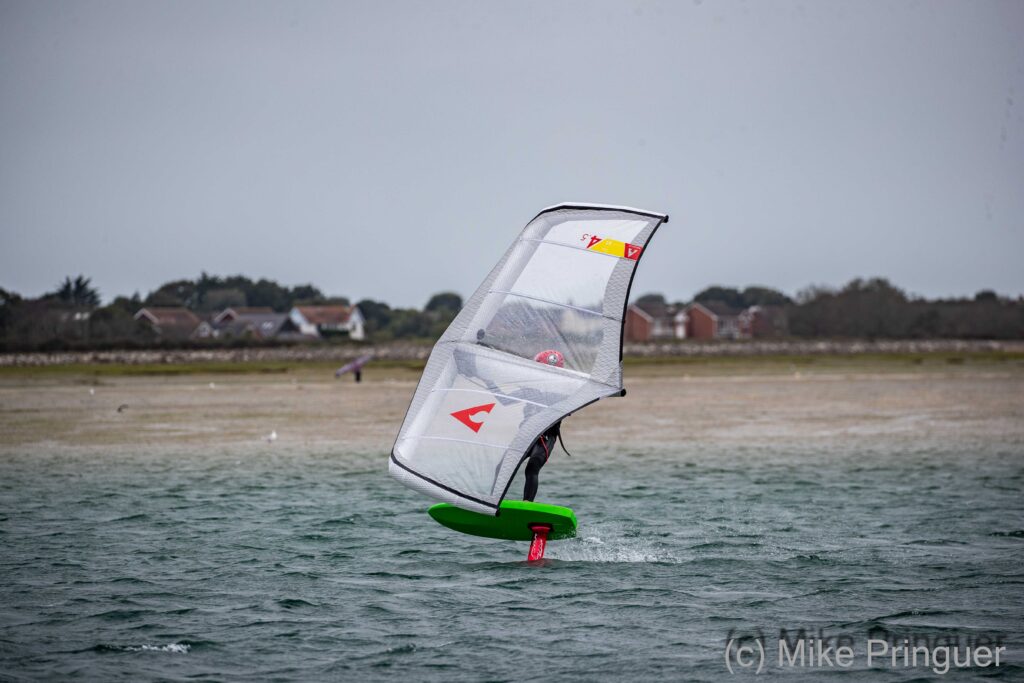
And to address what I mentioned about the canopy earlier in the review. I crashed hard a number of times and in all instances the monofilm held firm. So in terms of being durable, there’s no issue here. Aqueous wings are therefore definitely worth a look if you’re after something more boutique-orientated.
Price:
6m – 1399 Euros
4.5m – 1299 Euros
Info:

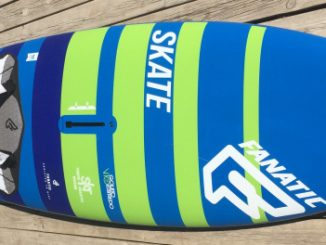
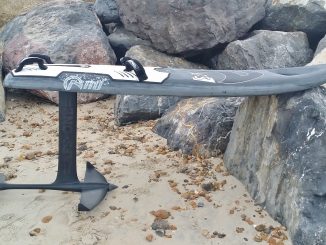
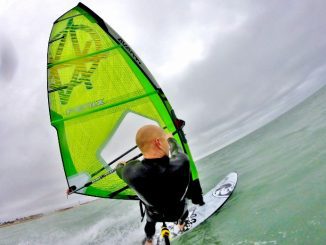
Leave a Reply